Agriculture and horticulture in North Rhine-Westphalia
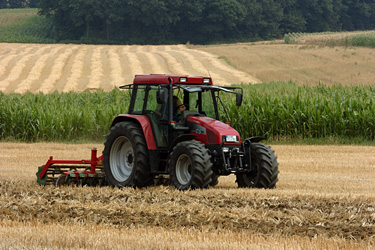

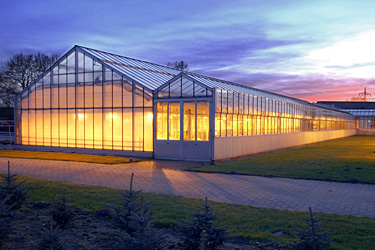

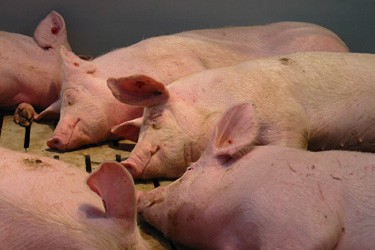

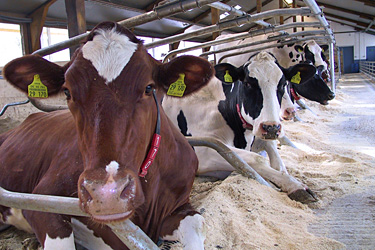

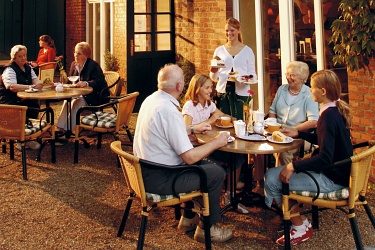
Agriculture in North Rhine-Westphalia is characterized by a huge variety of landscapes, soils, climates, altitudes, reliefs, structures and traditions. In Rheinland and the mountainous regions of Eifel and Sauerland, cultivation is performed until reaching an altitude of up to 100 metres above sea level. 34,300 agricultural businesses cultivate a total surface of 1.5 million hectares, generating an output value of approximately 7.7 billion euros. Round about 73 % of the entire surface is used for cultivation, while another 27 % serves as grassland.
Landscapes dominate the forms of agriculture
Because of the light soils in Münsterland, businesses are traditionally focused on animal husbandry. The southern Rheinland is dominated by the cultivation of cereals, fruit, vegetables and ornamental plants. Milk production and horticulture are the most important agrarian industries in the Lower Rhine Region. The Bergisches Land, Eifel, Sauerland and Siegerland are predominated by the keeping of milk cows and fattened cattle, as well as forestry. A majority of agricultural businesses with biogas facilities in North Rhine-Westphalia is located in the districts of Borken and Steinfurt, close to the Dutch border. Due to intensive agriculture, Ostwestfalen-Lippe has still preserved its rural charm. The fertile lands allow highly productive outputs.
The most efficient horticultural industry in Germany
Featuring 4,700 different businesses, horticulture in North Rhine-Westphalia offers about 50,000 jobs and is performed on a total surface of 31,000 hectares. In comparison to the year 2002 only 30 % of all businesses survived until today. However, one third of the German output from greenhouses is generated in North Rhine-Westphalia. Approximately 20 % of the achieved agricultural output value in North Rhine-Westphalia is generated by horticulture. This is almost two times more than in the rest of Germany.
All horticultural branches together generate annual revenues of 2.4 billion euros. Approximately 50 % of these revenues are generated by horticultural and landscaping services. When it comes to cultivation in greenhouses, North Rhine-Westphalia is number one with about 40 % of the entire greenhouse surfaces in Germany.
Special crops (asparagus, strawberries) are basically located on the border of the major cities in Rheinland and Ruhr, in the Lower Rhein Region, in Münsterland and in Ostwestfalen-Lippe.
Pig farming in Münsterland
Westphalian ham is not just a traditional term for pork delicacies, but it is also associated with the fact that 20 % of all fattened pigs in Germany originate from Münsterland and its neighbouring districts. Pig farming experienced the highest boom among all farmed animals during the past 30 years. According to recent estimates, the total amount adds up to 7.2 million pigs. This means that Münsterland is one of the key German regions for pork production.
In contrast to pig fattening, the number of milk cows has been decreasing for years. Nowadays, North Rhine-Westphalian farmers keep 424,000 cows on 6,500 farms dedicated to milk production. With 1.45 million cows, the density of cattle in North Rhine-Westphalia is extremely high. The share of fattened cows and steers plays a major role, too.
Animal foodstuffs are mostly grown on surfaces that are cultivated by local farmer families. More than two thirds of the cultivated food consists in cereals, especially wheat, barley and corn. More than 50 % of all harvested produce is not sold, but immediately fed to the farm’s own animals.
The number of agricultural businesses fell by 60 % to 34,300 during the past 25 years. The average cultivation area has almost doubled to 46.6 hectares during this time. 50 % of all farms are run in full time and represent the major source of income, while 41 % only serve as a side business and 9 % are run in partnership. Approximately 1,800 businesses are dedicated to organic farming cultivating a 5 % share of all farmlands.
High agricultural outputs in North Rhine-Westphalia
According to revenues, the agricultural output of North Rhine-Westphalia reaches rank no. 3 in Germany, only surpassed by Bavaria and Lower Saxony. With an average output of 7.7 billion euros from 2012 to 2014, our local agriculture plays an important role. In spite of its efficient agriculture, North Rhine-Westphalia is not considered an agrarian state anymore, due to the low number of people employed by agricultural businesses. Only 1.3 % of the entire labour force is dedicated to farming. However, the agricultural significance for North Rhine-Westphalia is much bigger, as powerful industries developed and established themselves along the value chain and in business segments that are linked to agriculture. The gross value added share of agribusiness in relation to the total economic performance in North Rhine-Westphalia reaches 10 % which corresponds to nearly 50 billion euros.
Food sources for alimentation
Farming and food businesses in North Rhine-Westphalia offer approximately 400,000 jobs. These branches belong to the biggest employers in the entire state.
Especially the food industry of Ostwestfalen-Lippe is in an excellent competitive position, due to close cooperations with sub-suppliers: high quality standards, a wide range of offers, about 1,000 companies with nearly 96,000 employees and revenues at an amount of 36 billion euros make it the most powerful food industry all across Germany.
High quality and recreation
Many farmers have taken advantage of the beautiful scenery and healthy environment in the outskirts of agglomerations and metropolitan areas by developing side businesses for further revenue streams, such as direct marketing, farm cafés or on-farm tourism. They offer great opportunities to city dwellers who would like to buy fresh and high quality food that comes straight from the fields or who are looking for some active and adventurous holidays with exciting activities, such as horse riding, animal care or bike tours.


 De
De